The first article, written by George P. Donehoo, discussed the “white plague” given to American Indians. Donehoo argued that the “white plague” was vices, such as alcohol that have devastated communities of Indians. Angus Nicholson, the author of the next article, wrote about the history of the Menominee, focusing on their lumber industry. In…
Red Man, The (1910-17)
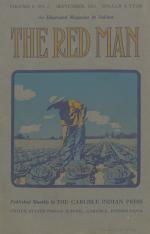
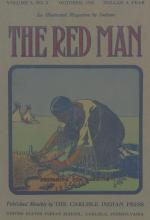
Orville J. Green, author of the first article, discussed the early history of the Mesquaki Indians (also known as Sac and Fox.) He covered the regional split between the Sac and Fox, their shared language and traditions, and the history of the nation in the 17th and 18th centuries. The next article, written by Arthur C. Parker, discussed the…
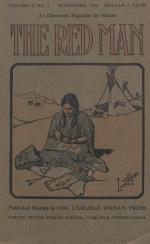
The first article, written by John W. Sanborn, director of the New York State Indian Exhibit, discussed his appreciation and interest in American Indians, stemming from his missionary work with the Seneca. Americus R. Allen, author of the next article, discussed an effective treatment for Tuberculosis glands. Orville J. Green discussed the…
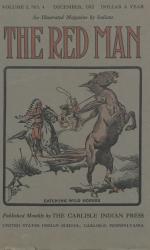
George Vaux Jr. discussed the living conditions amongst the Five Civilized Tribes of Oklahoma (the Cherokee, Creek, Seminole, Choctaw and Chickasaw Indians.) The next article is a poem entitled “The Man Who Wins”, written by Charles R. Barrett. F. H. Abbott, Commissioner of Indian Affairs and author of the next article, wrote about…

The first article, written by Frederick A. Woelflen, discussed the industrial progress of Northwest Indians. Harvey K. Meyer wrote about the Carlisle Indian School, and his belief that it trained Indian students for life. He referred to the amount of money made in instruction work, and the outing system. J. A. Gilfillan covered Ojibway Indian…

George P. Donehoo wrote the first article comparing Indians of the past to those of the future. The next article, written by E. L. Martin covered two Indian artists, Lone Star and his wife Angel De Cora and their art classes at the Carlisle Indian School. Estelle Armstrong, author of the next article, wrote about the tale of a dog, which…
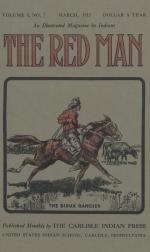
The Allegheny area, and its historical past with numerous Indian nations was discussed by George P. Donehoo in the first article. Next, in an article pulled from the Memphis Commercial Appeal, the importance of allowing Indians to receive an education was argued. W. A. Cook discussed the necessity for vocational training in Indian…
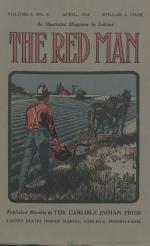
F. H. Abbott, the acting commissioner of Indian affairs and author of the first article, discussed the importance of the Carlisle Indian School for Indians, and his pride in the recent graduates. This article was delivered during commencement exercises. The next article, pulled from the Christian Science Monitor, discussed many of…
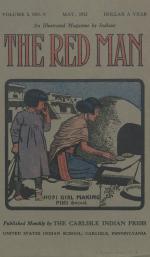
In this issue of The Red Man, the articles correlate to commencement addresses given at the 1913 graduation ceremony. Superintendent Moses Friedman, author of the first article, listed the different commencement exercises. Doctor Nehemiah Boynton gave the baccalaureate address and spoke of his wishes that the graduating students…
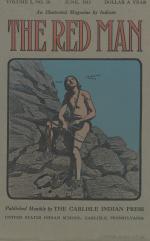
The first article, written by anthropologist Franz Boas, addressed origins of American Indians. Boaz posited that large number of physically, linguistically, and culturally distinct native groups pointed to an ancient history on the continent. He concluded that the indigenous peoples of North America were not closely related to or influenced by…
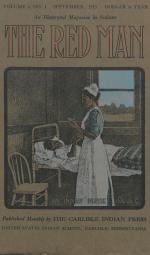
This issue of The Red Man begins with a story, written by George P. Donehoo, about Mary Jemison who was captured by Indians in 1755, but refused to return and chose to stay with them. The next article was a piece by Dana H. Kelsey, advising Indians to sell their excess land to farmer, rather than keeping them under lease. Dr. Frank G.…
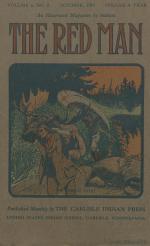
The opening article, written by L. C. Bateman gave a history of the Indian nations of Maine, as well as an update on present issues. In the next article, Harvey E. Taylor discussed the advancement Indians have made due to education and training. He remarked on the 514 graduates of the school as successful examples of Indian education efforts.…

Arthur C. Parker, author of the first article, discussed the Third National Conference of Indians, which took place in Denver, Colorado on October 14, 1913. At this vent, political, religious, philosophic, and agricultural issues were discussed. Next, Dana H. Kelsey wrote about the current conditions and needs of the Five Civilized Tribes of…

The issue began with an article, written by Joseph F. Anderson, about his study of the Navajo and their way of life. The next article, pulled from the New York Herald, discussed government attempts to work with Indians to reduce the cost of beef and fight the beef trust. In a piece pulled from the United Press News the commissioner’s attempts…
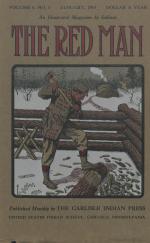
The opening article, written by George P. Donehoo discussed the famine that many Indians have faced in the past, and still continue to face. Next, Edna Dean Proctor wrote a poem entitled “Welcome to the Red Man.” Superintendent Moses Frieman, author of the next article, argued against the creation of universities only for Indians, and instead…

H. B. Peairs, author of the opening article, discussed the present and future of Indian education. Next, in an article pulled from Everybody’s, author Hasting McAdam wrote about the herding techniques of Indians. In the following article, Frederic Snyder argued his belief that Indians need to modernize themselves in order to succeed. Next, Edna…
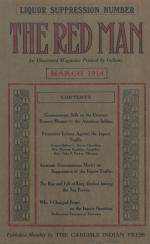
The first article, written by Cato Sells, the Commissioner of Indian Affairs argued that the greatest danger to Indians is alcohol. Tied to this, Senator Robert L. Owen wrote about the suppression of liquor traffic. Next, Sharman Coolidge covered the efforts to uplift the Indian’s through enforcement of liquor regulations. E. B Merrit,…

In the opening editorial comment section Commissioner Cato Sells and his industrial program were discussed. Next, E. B. Merritt wrote about industrial opportunities for Indians such as farming, handling of stock, dairying, and other industrial trades. Charles L. Davis, author of the following article, discussed which breed of horse was best…
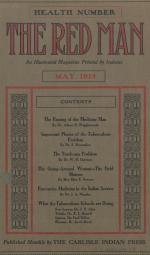
This issue of The Red Man covered the problem of Tuberculosis outbreak in Indian Nations. In the opening editorial comment section temperance and blood pressure amongst Indians was discussed. Dr. A. M. Wigglesworth, author of the first article, wrote about the passing of the Navajo medicine man. Next, E. B. Merrit discussed the major health…
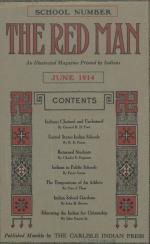
In the opening editorial comment section, Indians in public schools and the Carlisle Alumni Association were discussed. In the first article, former Carlisle Superintendent R. H. Pratt gave a history of how the school was founded and how its evolutions over 25 years. Next, H. B. Peairs of the U. S. Indian Service, discussed the reasoning and…
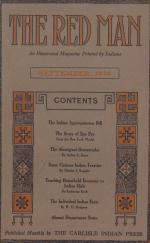
This issue begins with the press comments section. The Indian Appropriation Bill, which appropriated 1.5 million dollars from Indian funds to improve health conditions, education, and agriculture, was discussed. The next article, which was pulled from The New York World, discussed the Story of Spo-Pee, “the silent Indian”. Arthur L.…
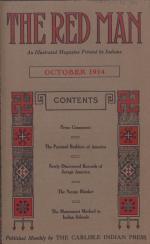
In the opening press comments Indian policies, both past and present, were discussed. The first article, written by Harry L. Wells, was about the mound builders of the Mississippi, who Wells claimed descended from the pyramid builders of Egypt. Superintendent Oscar Lipps, in the next article, explained the history of the art of weaving, which…
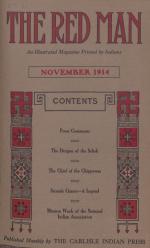
The press comments section covered a Supreme Court Case involving a group of Cherokees, who sought to recover interest on deferred payments. Arthur L. Stone, in the following article, told the story of the Dragon of Selish. Next, Domitilla wrote about the Stonish Giants who were defeated by the Shawnee. The following article, pulled from the…

Superintendent Oscar Lipps opened the issue with a dedication to Gabe E. Parker, a Choctaw Indian who became the Superintendent of the Five Civilized Tribes. In the press comments section Canadian Indians, as well as the newest census were discussed. In an article pulled from the New York Post, General Hugh L. Scott who worked…
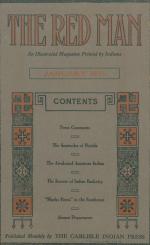
The opening press comments section compiled excerpts from various news outlets that discussed Indian affairs. In the first article, Minnie Moore-Wilson wrote about the oppression of the Florida Seminoles, and their rights. Arthur C. Parker discussed the memorial of the Society of American Indians. Next, Edwin L. Sabin wrote about the Pueblo…
